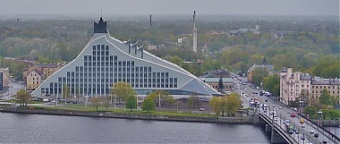Analytics, Economics, EU – Baltic States, Latvia, Markets and Companies
International Internet Magazine. Baltic States news & analytics
Wednesday, 17.12.2025, 06:04
Out of control development of municipalities around Riga hamper city's development
 Print version
Print version |
|---|
The challenge lies in the fact that Riga infrastructure - roads, schools, kindergartens, cultural institutions, parks - is used by more people than there are taxpayers in Riga. The city officially has more than 600,000 residents, and as many people live in the municipalities around Riga - most of which use the resources of the city. Furthermore, while Riga's population has been decreasing or at least not changing during the past several years, the local governments around the city have been growing fast, says Celmins, adding that this problem has to be solved in the future so Riga could remain competitive in the Baltic region.
Riga is the third largest city in the Baltic Sea region after Stockholm and St. Petersburg, Celmins points out. Stockholm has been able to consolidate the municipalities around it into a single administrative system, while the situation in Riga is completely different. All the municipalities around Riga use the resources of the city, but officially all the local governments have their own budgets and priorities.
Another problem is that the development of local governments around Riga has been uncontrolled for the past ten years, without giving a thought to transport and social infrastructure. And there is practically no cooperation between Riga and the municipalities around the city.
But it would be fair to find out how many Greater Riga residents use Riga infrastructure, and then share the cost among local governments and Riga.








 «The Baltic Course» Is Sold and Stays in Business!
«The Baltic Course» Is Sold and Stays in Business!

